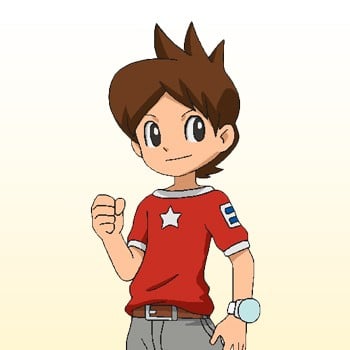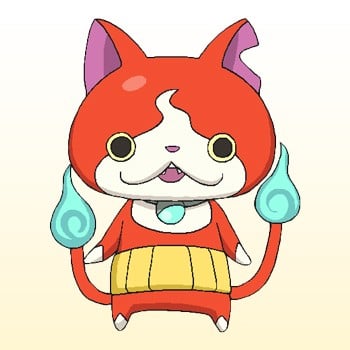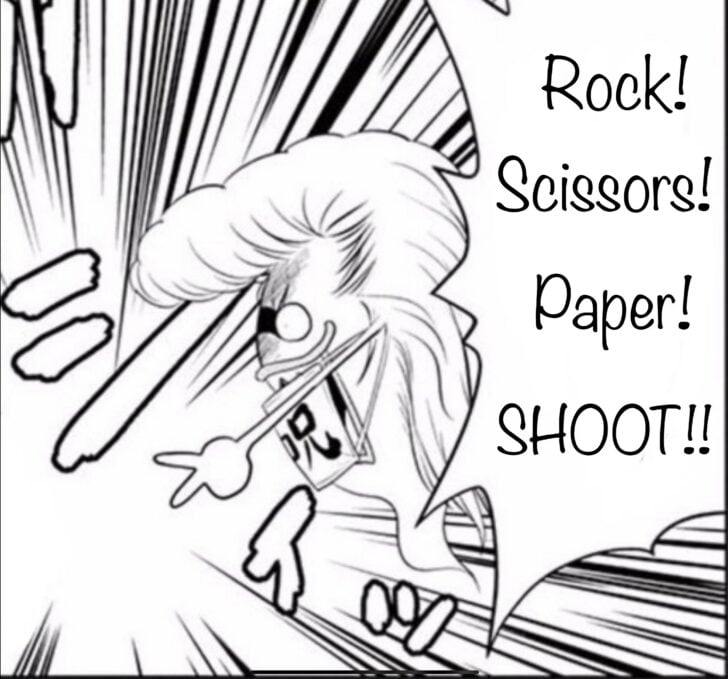Share on your favorite
Or copy the link
Below are navigation links that will take you to the main text and navigation menus.
26,551 first names, 70,620 last names, 333,585 kanji variations.
one of the best Japanese name search tools for your baby!

Image by: Yokai watch official website ©LEVEL-5/Yokai watch project・Tv Tokyo
Contents
Yokai Watch is a story written by Noriyuki Konishi. It is about a young boy named Keita Amano who obtains the Yokai Watch through a Yokai named whisper who then turns into his butler and guide. The Yokai’s in this series are based on Japanese traditional legends but usually with a twist. They are invisible spirits and only the person with a yokai watch can see them. Using the Yokai Watch Keita finds Yokai that are responsible for life’s daily annoyances and deals with them. If he manages to help them he gets the Yokai’s medal and can use it to call them out whenever he needs their help. Throughout the series, Keita gets many Yokai friends and continues to solve the problems.
The English title is the same as the Japanese title which is ‘Yokai Watch’ (妖怪 ウォッチ, Yōkai Wotchi.) ‘Yokai’(妖怪) is written with two kanji’s and each kanji has a different meaning. ‘妖, read Yo’ means Demon and ‘怪, read Kai’ means suspicious or strange. ‘Watch’ is an English word so in Japanese, it is written in katakana as ‘ウォッチ’(Wotchi.)

Image by: Yokai watch comic 1 ©Noriyuki Konishi, LEVEL-5Inc
This series is called ‘Yokai Watch’ because the only reason why Keita can see, help or, stop Yokai is because of the yokai watch. The Yokai Watch also allows Keita to call out his Yokai friends using their medals whenever he is in trouble.
In Japanese culture, names have significant meanings that are supposed to represent you as a person. Names can be expressed in hiragana, katakana, and kanji. Let’s find out the meanings of some names of characters in Yokai Watch.

Image by: Yokai watch official website ©LEVEL-5/Yokai watch project・Tv Tokyo
First Let’s start with the main character Keita. He was an ordinary young boy until one day he obtained the Yokai watch. He lives with two Yokai’s named Whisper and Jibanyan. ‘Kei’(景) means to view, ‘Ta’(太) is a common kanji used at the end of boys’ names and it means extremely big, ‘Ama’(天) means heaven and ‘No’(野) means field.

Image by: Yokai watch official website ©LEVEL-5/Yokai watch project・Tv Tokyo
Fumika is called Fumi by her friends. She is a kind girl in Keita’s class and gets possessed by Yokai from time to time. She was Keita’s school crush and later becomes Fumika Amano when she marries Keita. ‘Fumi’(文) means letter, ‘Ka’(花) means flower, ‘Ko’(木) means tree and ‘Dama’(霊) means spirit.

Image by: Yokai watch official website ©LEVEL-5/Yokai watch project・Tv Tokyo
Whisper is Keita’s Yokai Butler and the one who passed the Yokai watch to Keita. Whisper is pale white with big blue lips. He is round and has no legs like a ghost. Since ‘Whisper’ is an English word it is written in katakana as ‘ウィスパー, Wisupā’.

Image by: Yokai watch official website ©LEVEL-5/Yokai watch project・Tv Tokyo
Jibanyan is a cat-like yokai and lives with Keita along with Whisper. He used to be a normal cat but then died by getting run over by a truck and became a yokai. His only fighting move is ‘Paws of Fury’ or in Japanese ‘ひゃくれつ肉球, Hyakuretsu Nikukyu’. ‘Jiba’(ジバ) came from the word ‘Jibakurei’(地縛霊) which means ghosts who haunts and stays in the same place, and ‘Nyan’(ニャン) is the sound that cats make.
Here are some useful phrases from Yokai Watch which will help you along with your Japanese studies!

This is the Japanese phrase used when playing the world-famous game ‘Scissors, paper, Stone’. There are many ways to say this phrase in different languages and now you know how to say it in Japanese!

Image by: Yokai watch comic 12 Ep 1 ©Noriyuki Konishi, LEVEL-5Inc
Keita calls himself ‘Ore’ because this is a way to call yourself for boys. ‘Nani’ means ‘What’. ‘Shiteita’(did) is the past tense of ‘Shiteiru’(doing), most of the Japanese verbs have conjugation rules.
Sort by: Most Kanji Variations
Sorts names by how many different kanji spellings they have. In general, names with more variants tend to be more familiar and widespread in Japan (with some exceptions).
Sort by: Most Viewed
Sorts names by page views on this site. Views reflect global traffic (including Japan), so this does not represent popularity among Japanese people only. A high view count does not necessarily mean the name is famous in Japan.
What is Hiragana?
Hiragana is one of the two Japanese syllabaries. Each character represents a sound (mora), not a meaning. It is used for native words, grammatical particles, verb/adjective endings (okurigana), and to show pronunciation above kanji (furigana). It developed from cursive forms of kanji.
What is Katakana?
Katakana is one of the two Japanese syllabaries. Each character represents a sound (mora), not a meaning. It is mainly used to write foreign words and names, loanwords, onomatopoeia, and for emphasis.
What is English Transcription?
“English transcription” (romanization) is the romanized form of a Japanese name, intended to reproduce its pronunciation as closely as possible. It is also useful for searching names on this site.
Japanese-Style Nicknames
In Japan, nicknames are used to express familiarity and affection. Typical features include:
Shortened forms: Names are often shortened for closeness, e.g., “Yuki” from “Yukiko” or “Taka” from “Takashi”.
Suffixes: Terms like “-chan” (often for girls, also for young children) and “-kun” (often for boys) are used among family and close friends. Among very close adults, “-chan” may still be used. More details
Use & context: Nicknames are informal—common among friends, family, or close colleagues—and are not suitable for formal or professional settings. Their use implies a certain degree of intimacy.
Long vowels: The long vowel mark “chōonpu” (ー) extends the preceding vowel. For example, “あーちゃん” (A-chan) lengthens the “あ” sound.
Households
Sorts surnames by the estimated number of Japanese households that use them. More households generally indicates a more common or well-known surname.
About our last-name data
